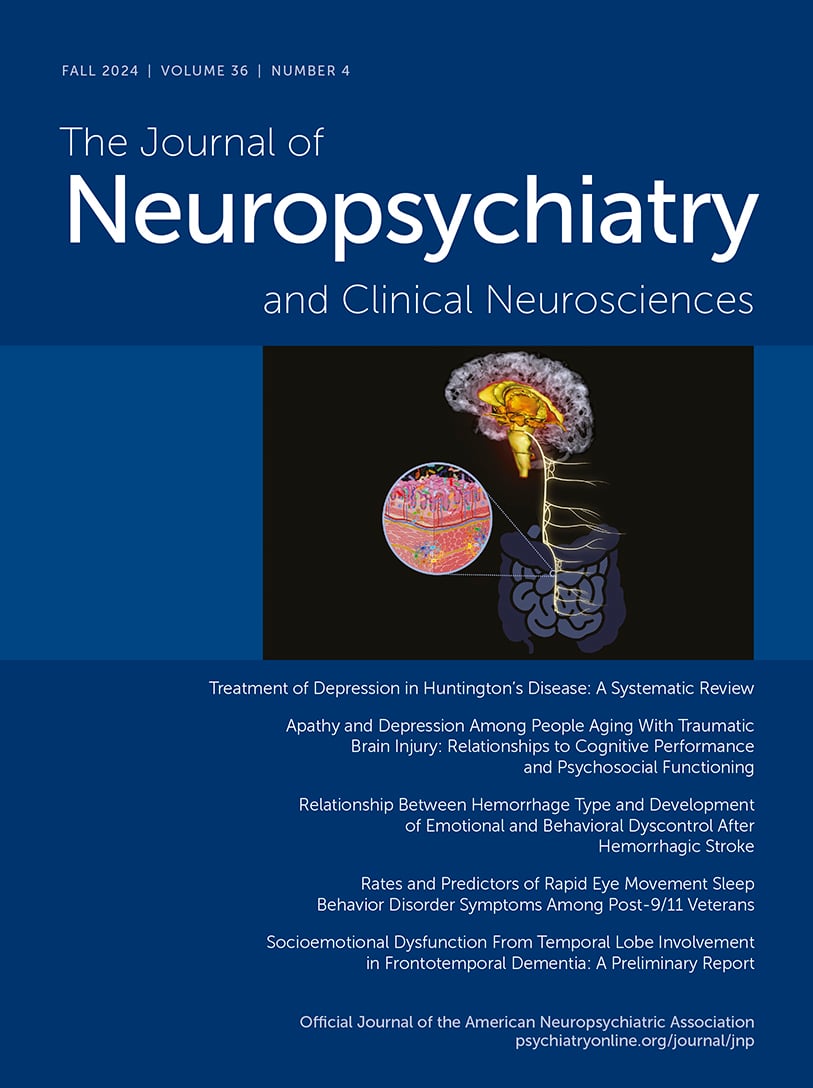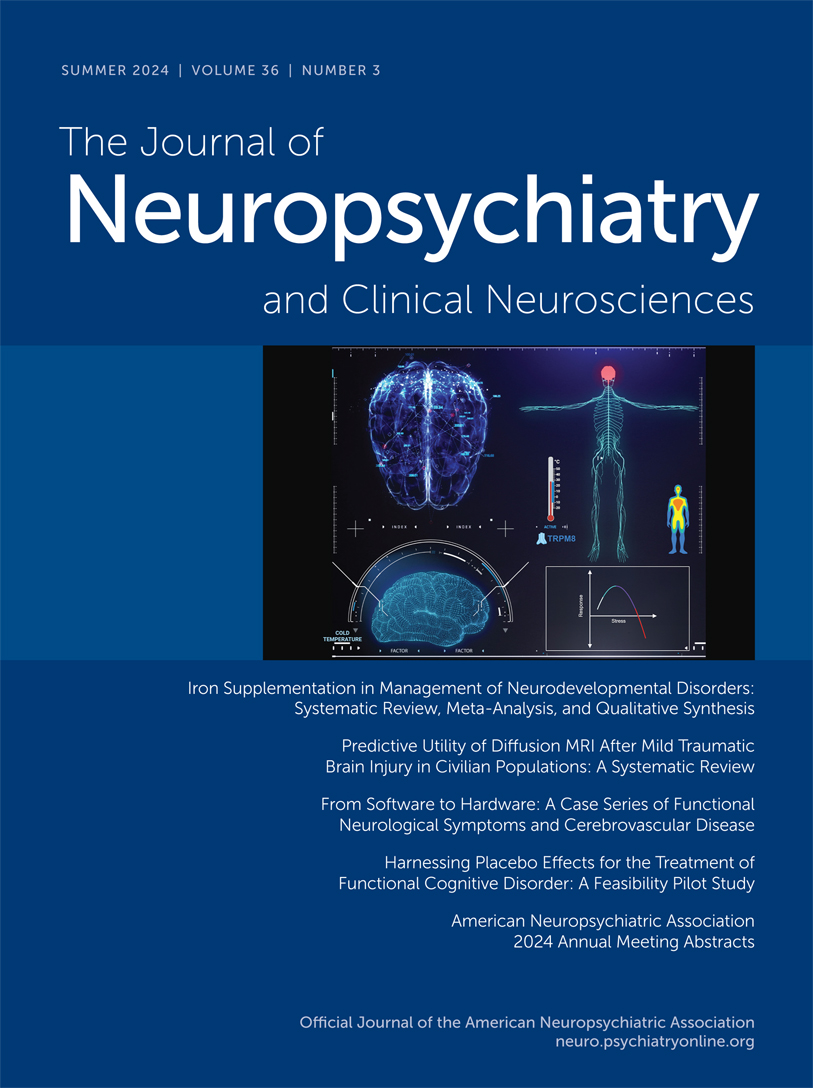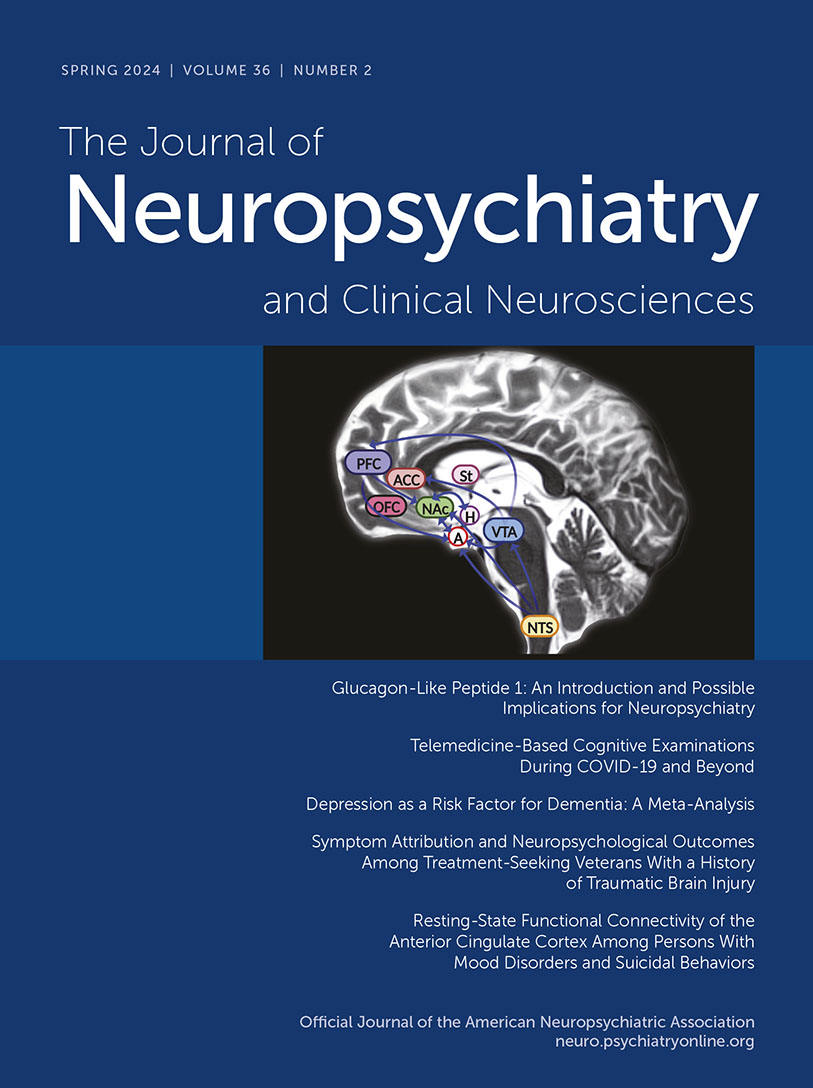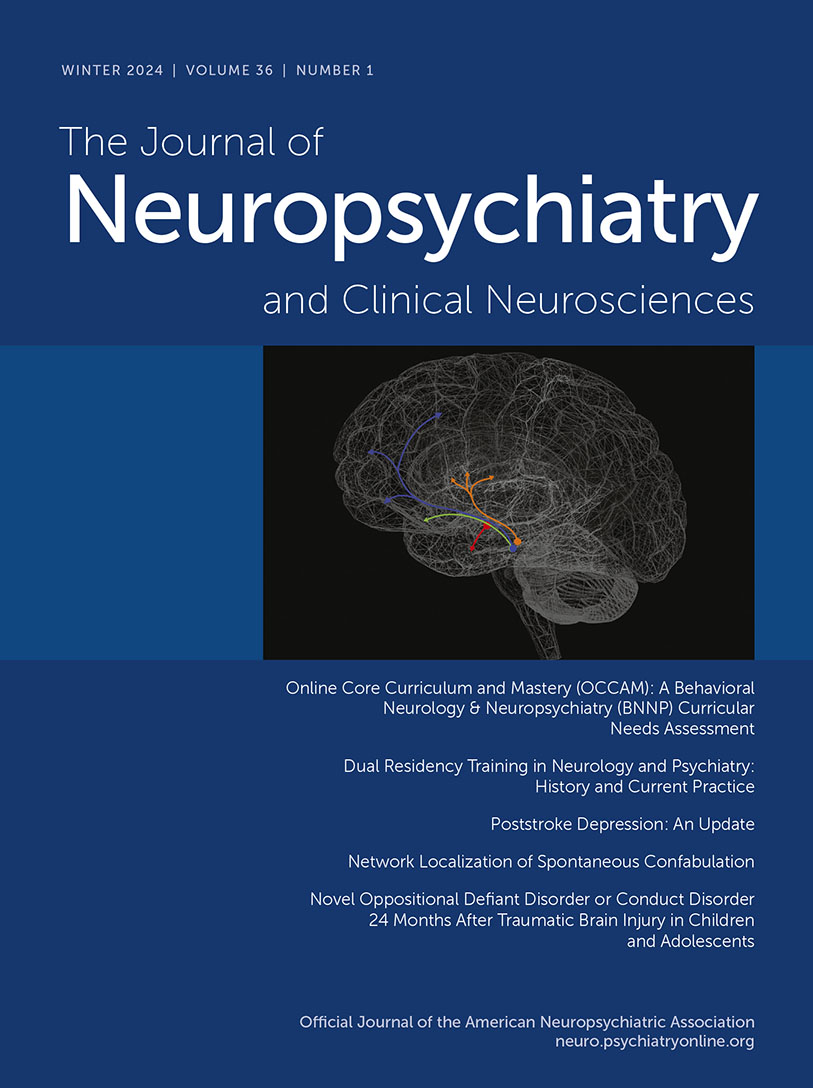The Journal of Neuropsychiatry and Clinical Neurosciences
- Volume 34
- Number 2
- April 2022
Windows to the Brain
Special Articles
Publication date: 28 December 2021
Pages100–112Objective: Although apathy is commonly reported among patients with Huntington’s disease (HD), this psychiatric symptom has not yet been clearly defined or extensively studied in HD. Most researchers have adopted descriptive approaches, showing that apathy ...
https://doi.org/10.1176/appi.neuropsych.21060154Publication date: 18 January 2022
Pages113–123Parvalbumin (PV) interneurons are present in multiple brain regions and produce complex influences on brain functioning. An increasing number of research findings indicate that the function of these interneurons is more complex than solely to inhibit ...
https://doi.org/10.1176/appi.neuropsych.21050136Treatment in Behavioral Neurology & Neuropsychiatry
Publication date: 12 November 2021
Pages124–131The investigators aimed to draw attention to current debates surrounding the etiologies of dream enactment behaviors in patients with posttraumatic stress disorder (PTSD). The phenomenological overlap between PTSD-related nocturnal symptoms, rapid eye ...
https://doi.org/10.1176/appi.neuropsych.21050115Articles
Publication date: 18 January 2022
Pages132–140Objective: According to DSM-5, catatonia and delirium are mutually exclusive clinical syndromes. The investigators explored the co-occurrence of delirium and catatonia (i.e., catatonic delirium) and the clinical significance of this syndrome with a sample ...
https://doi.org/10.1176/appi.neuropsych.18120364Publication date: 19 November 2021
Pages141–148Objective: The investigators aimed to explore the clinical characteristics, immunotherapy, and outcomes of patients with antileucine-rich glioma-inactivated-1 (anti-LGI1) encephalitis. Methods: Data on participants’ clinical characteristics, laboratory ...
https://doi.org/10.1176/appi.neuropsych.20120303Publication date: 18 January 2022
Pages149–157Objective: The investigators examined the factors predictive of novel oppositional defiant disorder in the 6–12 months following traumatic brain injury (TBI). Methods: Children ages 5–14 years old who experienced a TBI were recruited from consecutive ...
https://doi.org/10.1176/appi.neuropsych.21060149Publication date: 19 November 2021
Pages158–167Objective: Depression and apathy are common after traumatic brain injury (TBI), and different intervention strategies are recommended for each. However, a differential diagnosis can be difficult in clinical settings, especially given that apathy is ...
https://doi.org/10.1176/appi.neuropsych.21020046Publication date: 28 December 2021
Pages168–176Objective: Up to one-third of patients with Parkinson’s disease (PD) experience visual hallucinations (VHs). Lewy bodies are sparse in the visual cortices and seem unlikely to explain the hallucinations. Some neuroimaging studies have found that perfusion ...
https://doi.org/10.1176/appi.neuropsych.21040103Clinical and Research Reports
Publication date: 28 December 2021
Pages177–181Objective: Impaired empathy is a core feature of behavioral variant frontotemporal dementia (bvFTD). Patients with bvFTD are also prominently impaired in experiencing self-conscious emotions. The investigators explored whether impaired empathy in bvFTD, ...
https://doi.org/10.1176/appi.neuropsych.21040099Publication date: 28 December 2021
Pages182–187Objective: Little is known about psychiatric symptoms among patients with migraine and newly diagnosed focal epilepsy. The investigators compared symptoms of depression, anxiety, and suicidality among people with newly diagnosed focal epilepsy with ...
https://doi.org/10.1176/appi.neuropsych.21050124Past Issues
View Issues Archive
Vol. 36 | No. 4

Vol. 36 | No. 3

Vol. 36 | No. 2
